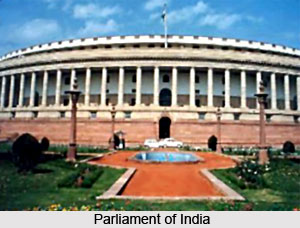 Constituencies and Reservation of Seats in elections are determined according to the set laws on elections in the country. Constituencies are the basic units from where the candidates stand for elections. They are certain separate geographical areas into which the entire country is split up. The electors can cast one vote each for a candidate (although most candidates stand as independents, most successful candidates stand as members of political parties), the winner being the candidate who gets the maximum votes. The country has been divided into 543 Parliamentary Constituencies, each of which returns one Member of Parliament to the Lok Sabha, the lower house of the Indian Parliament. The size and shape of the parliamentary constituencies are determined by an independent Delimitation Commission, which aims to create constituencies which have roughly the same population, subject to geographical considerations and the boundaries of the states and administrative areas.
Constituencies and Reservation of Seats in elections are determined according to the set laws on elections in the country. Constituencies are the basic units from where the candidates stand for elections. They are certain separate geographical areas into which the entire country is split up. The electors can cast one vote each for a candidate (although most candidates stand as independents, most successful candidates stand as members of political parties), the winner being the candidate who gets the maximum votes. The country has been divided into 543 Parliamentary Constituencies, each of which returns one Member of Parliament to the Lok Sabha, the lower house of the Indian Parliament. The size and shape of the parliamentary constituencies are determined by an independent Delimitation Commission, which aims to create constituencies which have roughly the same population, subject to geographical considerations and the boundaries of the states and administrative areas.
Delimitation is the redrawing of the boundaries of parliamentary or assembly constituencies to make sure that there are, as near as practicable, the same number of people in each constituency. In India boundaries are meant to be examined after the ten-yearly census to reflect changes in population, for which Parliament by law establishes an independent Delimitation Commission, made up of the Chief Election Commissioner and two judges or ex-judges from the Supreme Court of India or one of the High Courts of India. However, under a constitutional amendment of 1976, delimitation was suspended until after the census of 2001, apparently so that states` family-planning programs would not affect their political representation in the Lok Sabha and Vidhan Sabhas. This has led to wide discrepancies in the size of constituencies, with the largest having over 25,00,000 electors, and the smallest less than 50,000.
As regards the reservation of seats, the Constitution of India puts a limit on the size of the Lok Sabha of 550 elected members, apart from two members who can be nominated by the Indian President to represent the Anglo-Indian community. There are also provisions to ensure the representation of scheduled castes and scheduled tribes, with reserved constituencies where only candidates from these communities can stand for election.




















